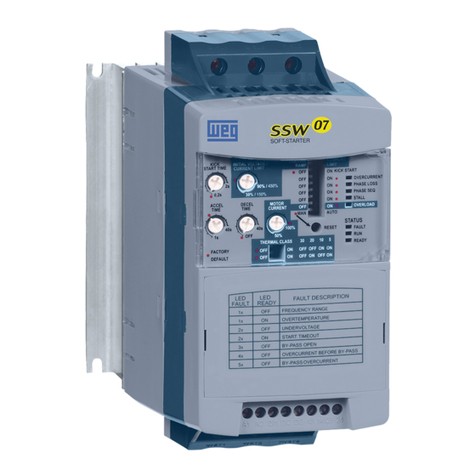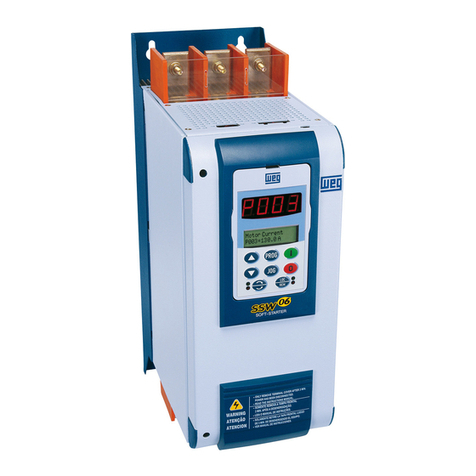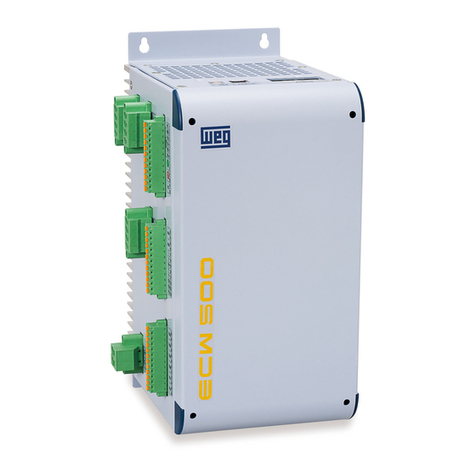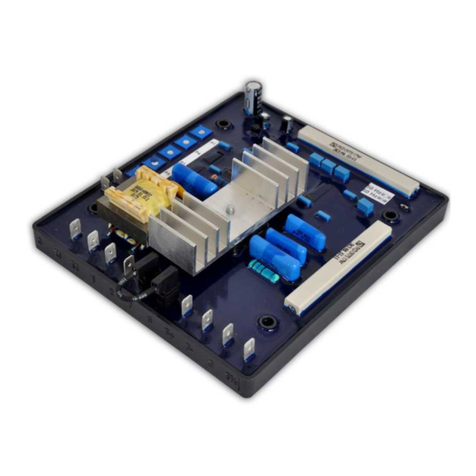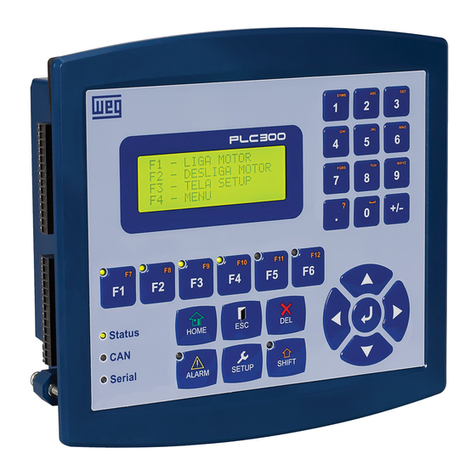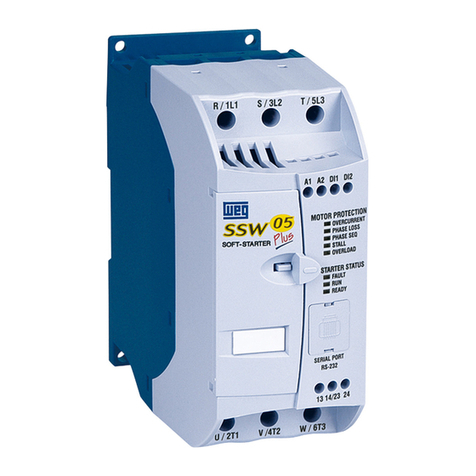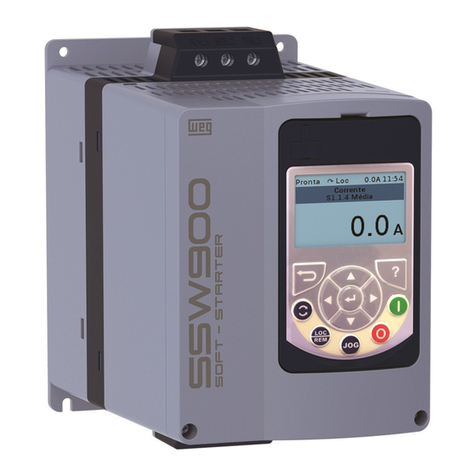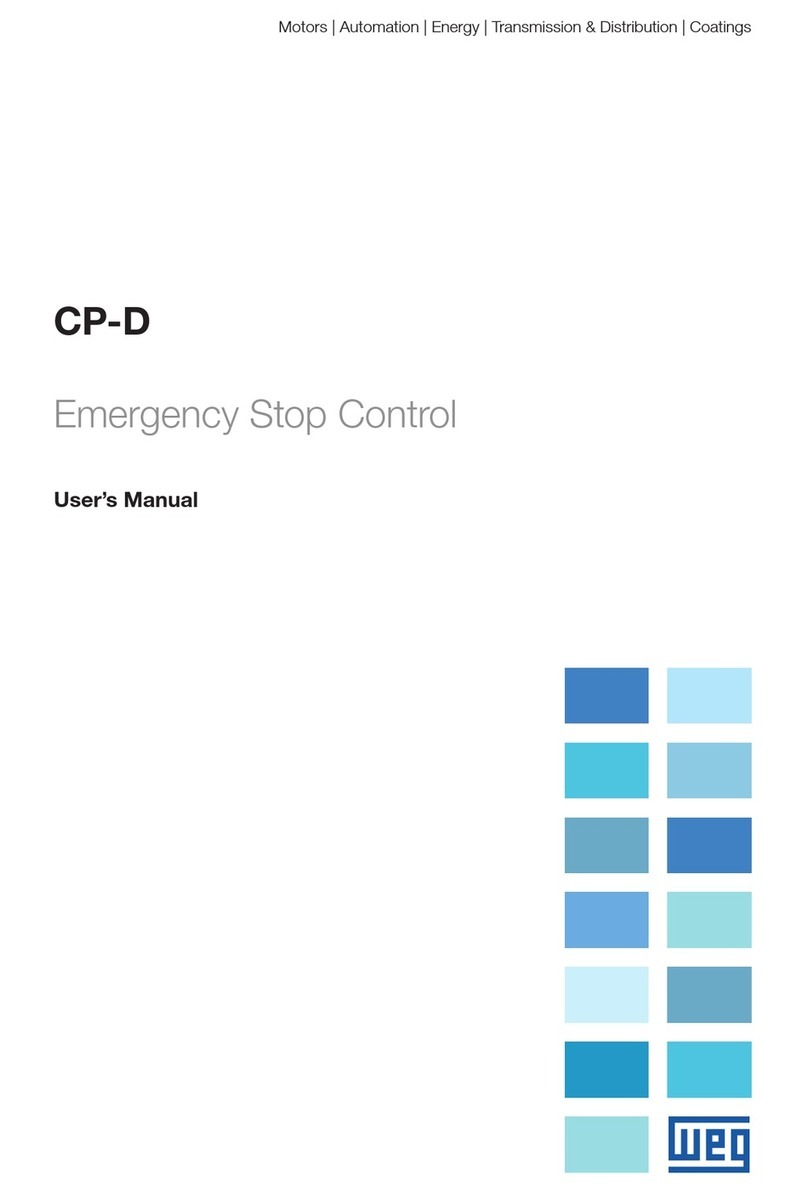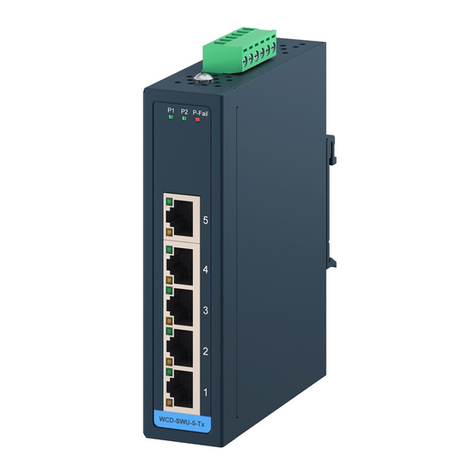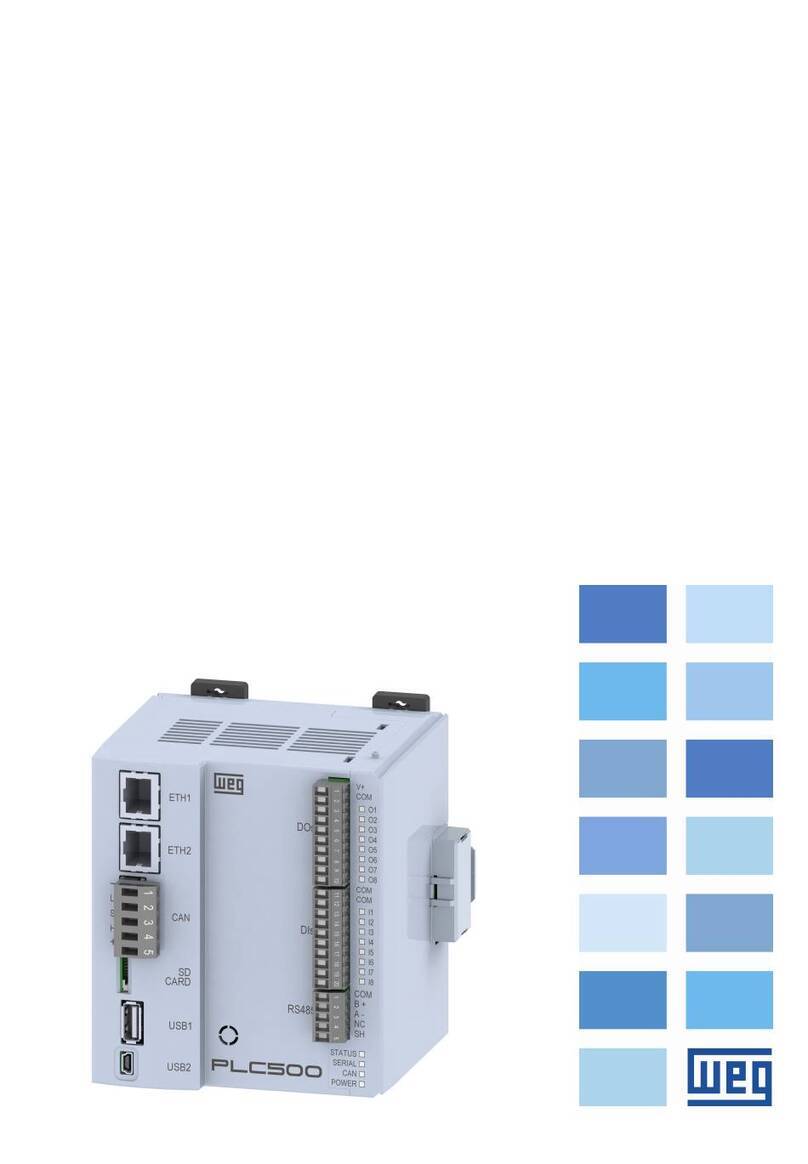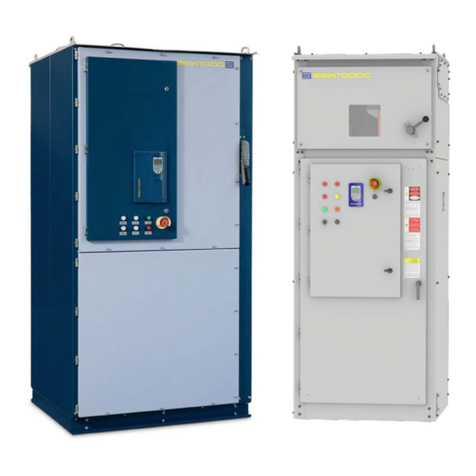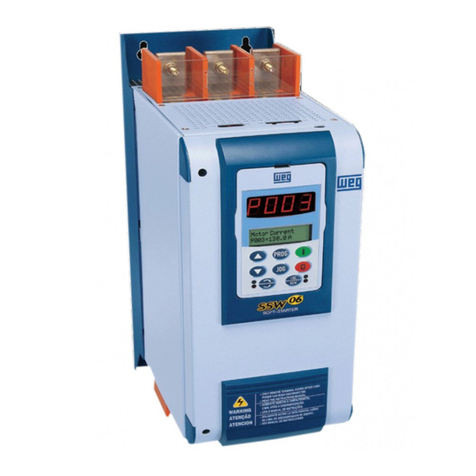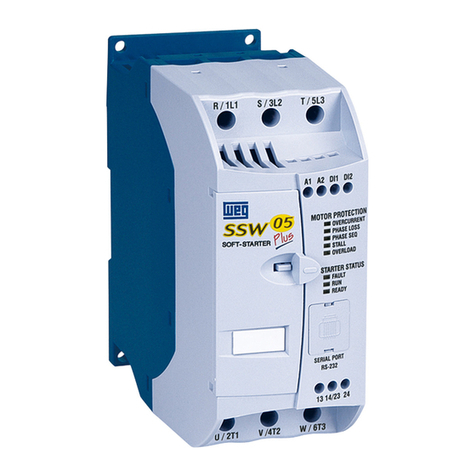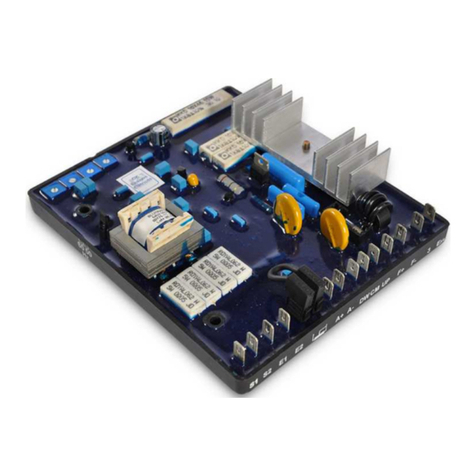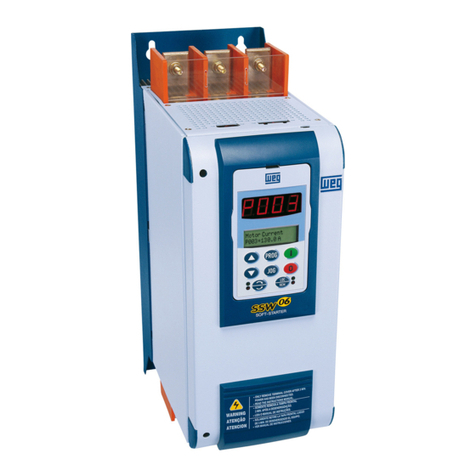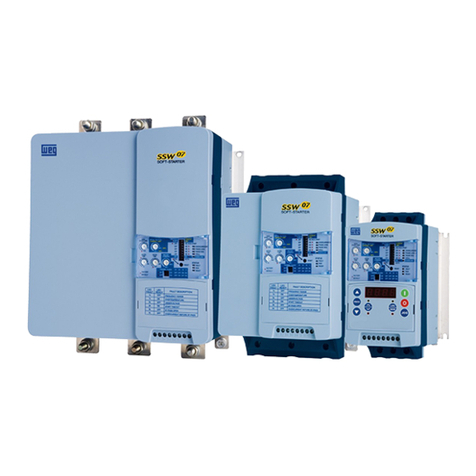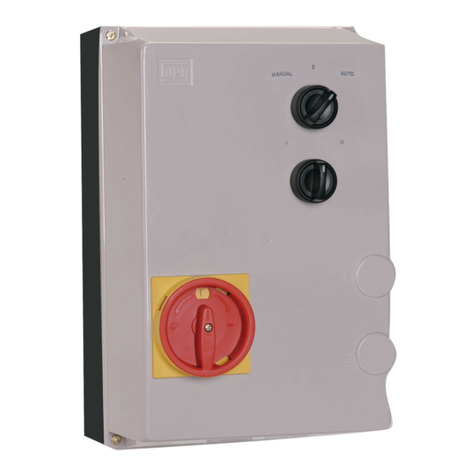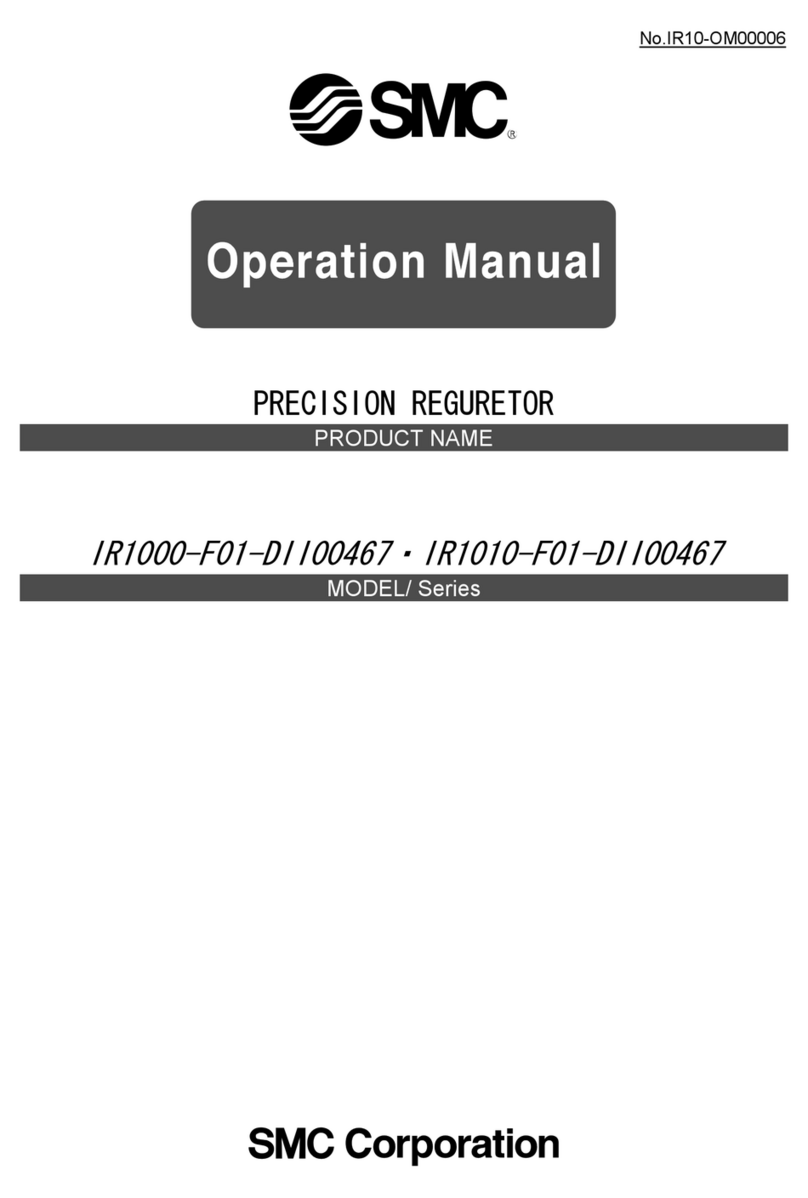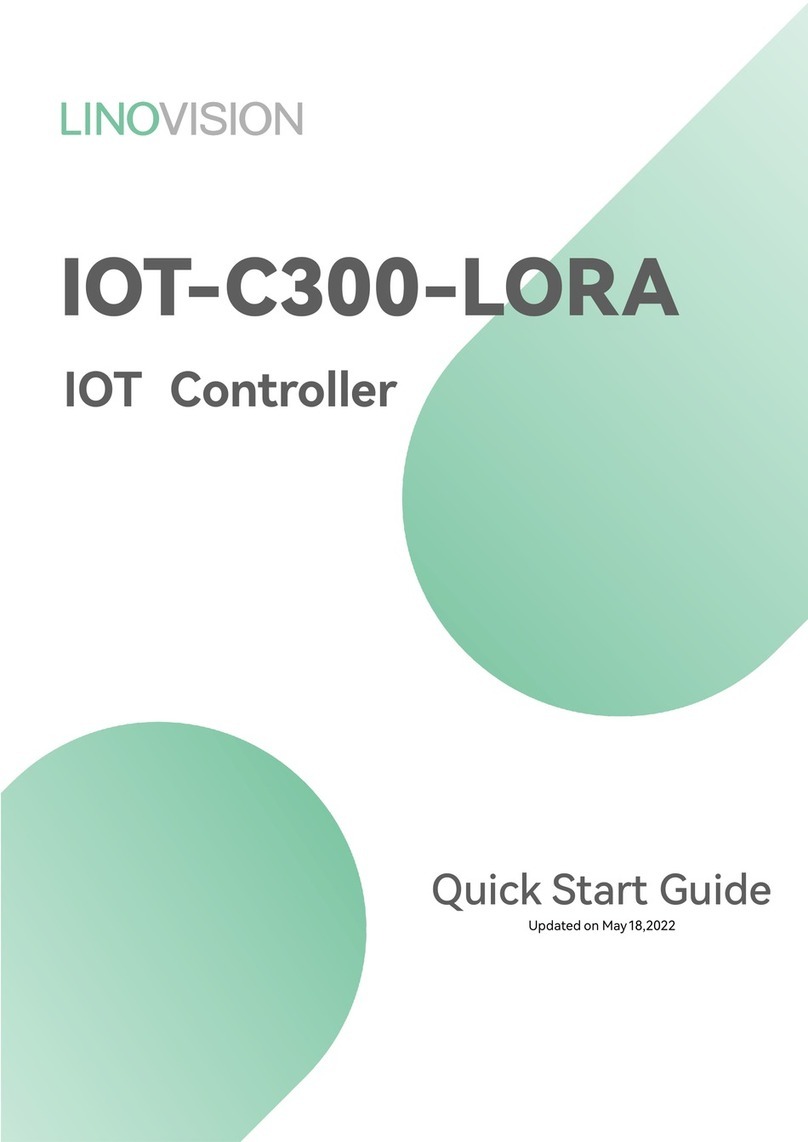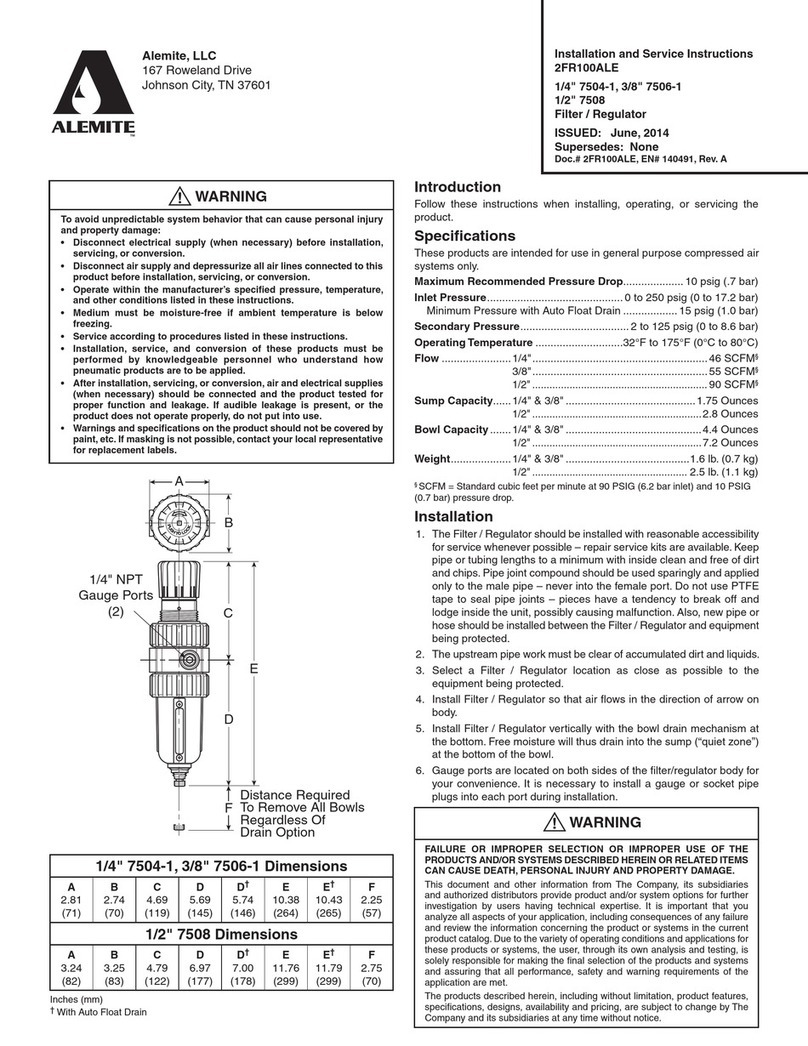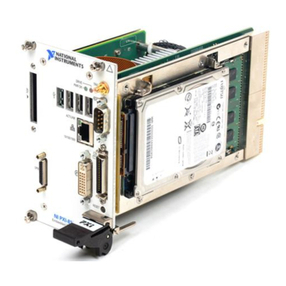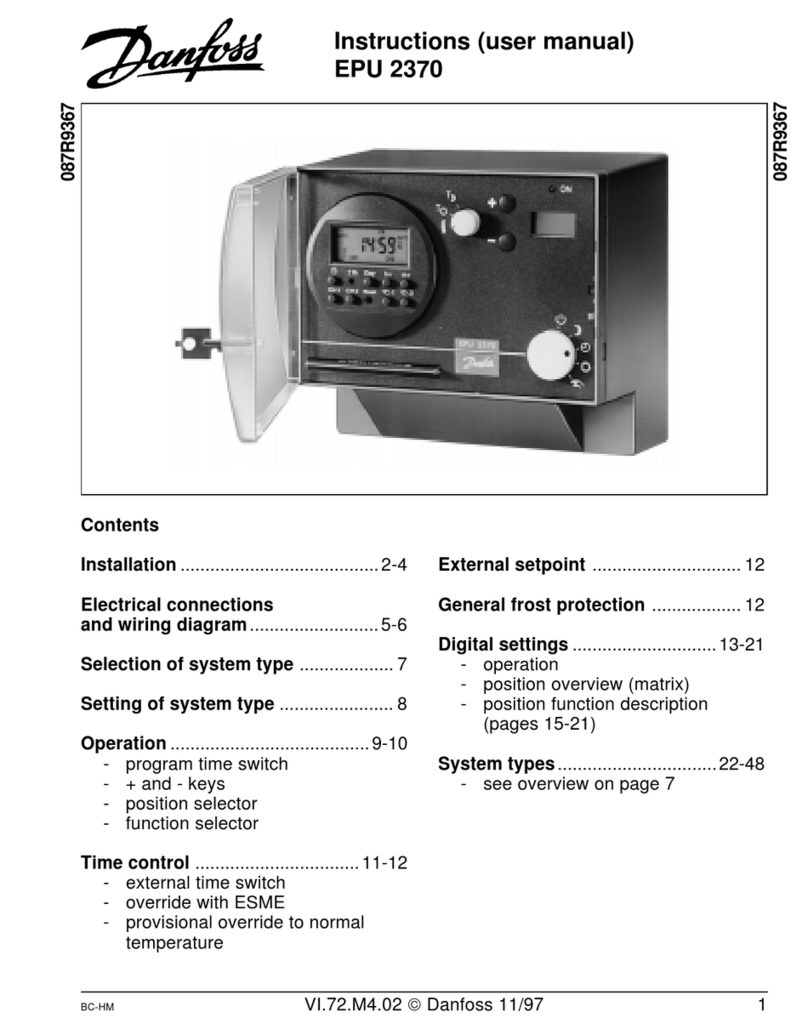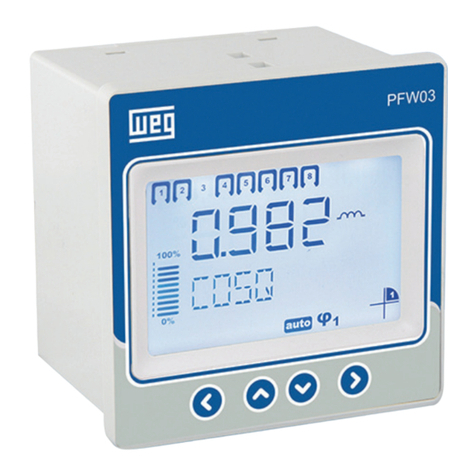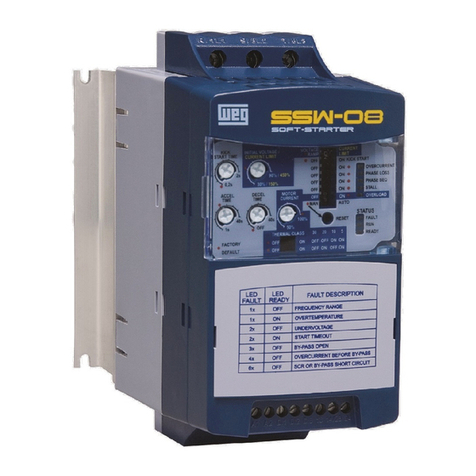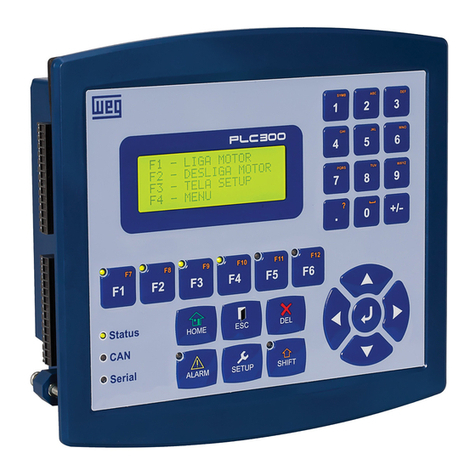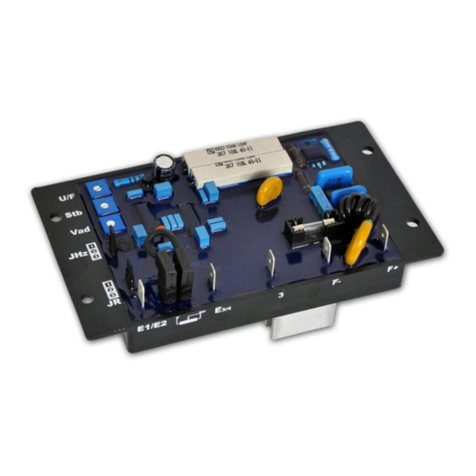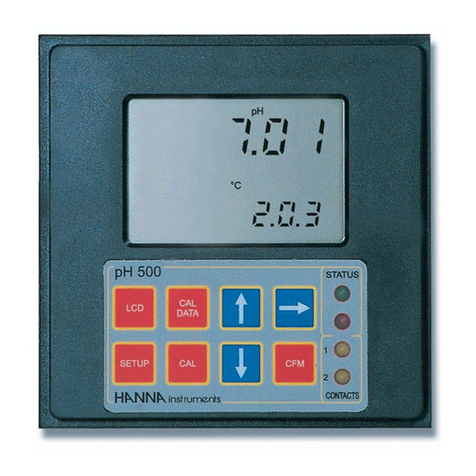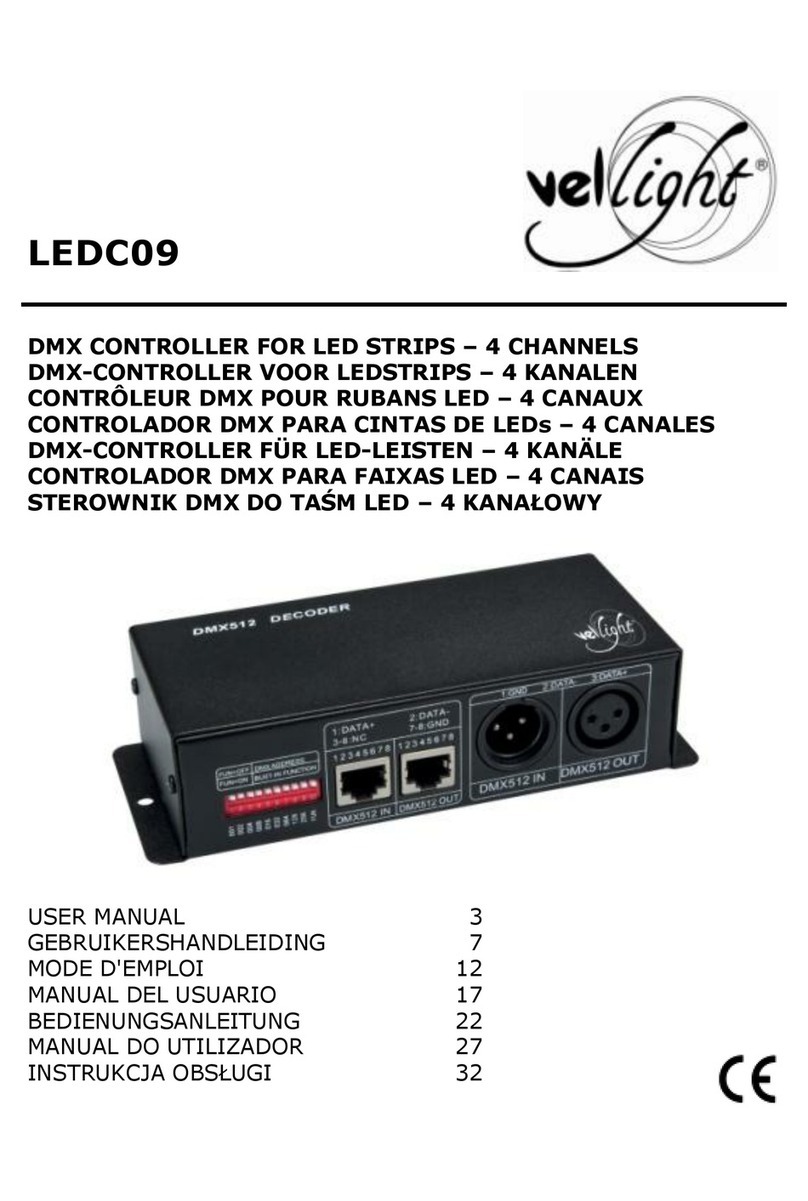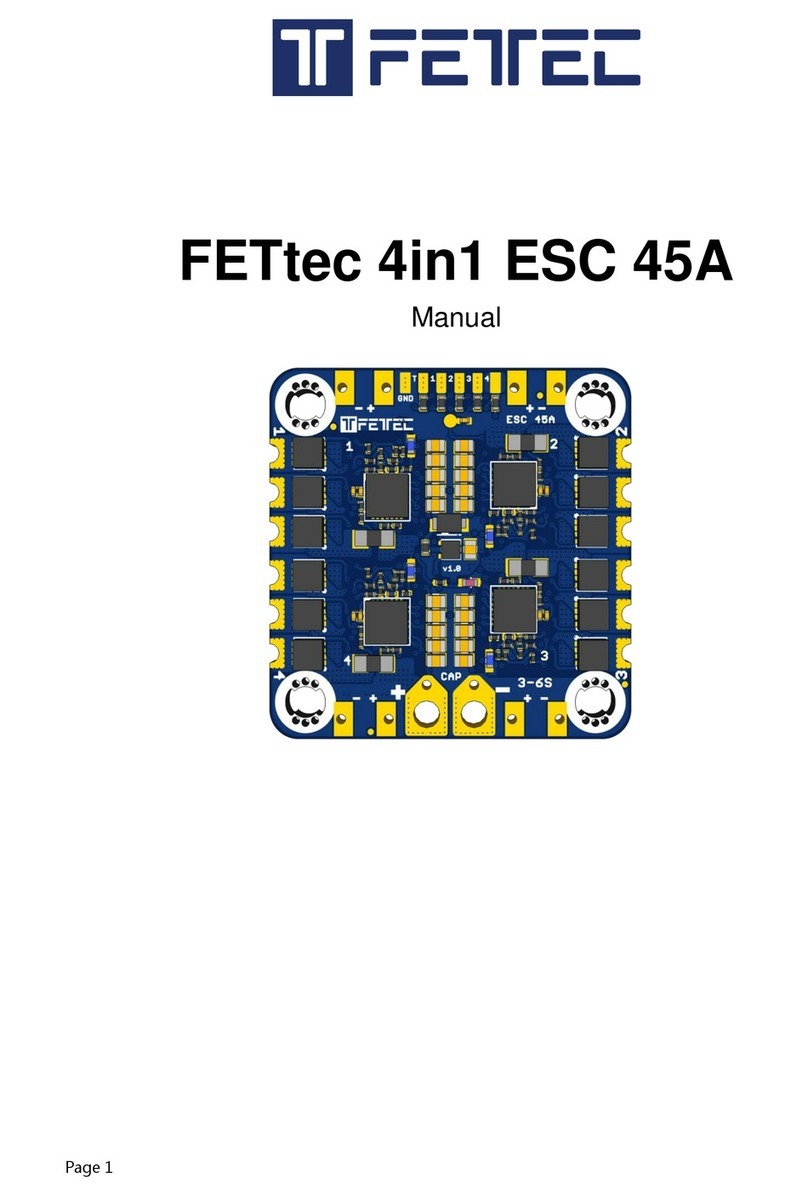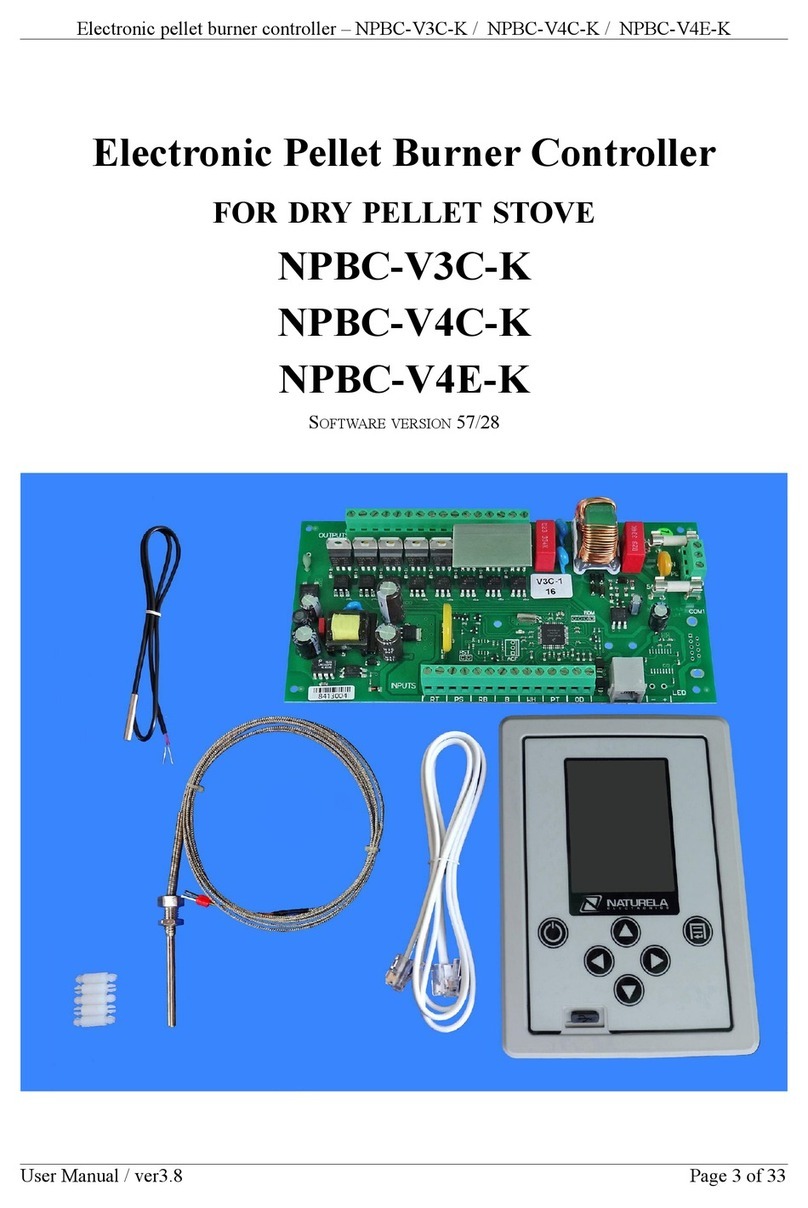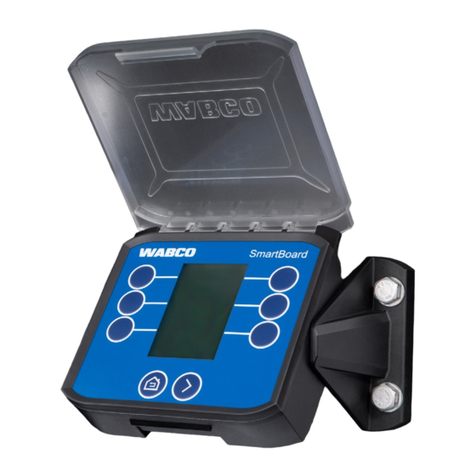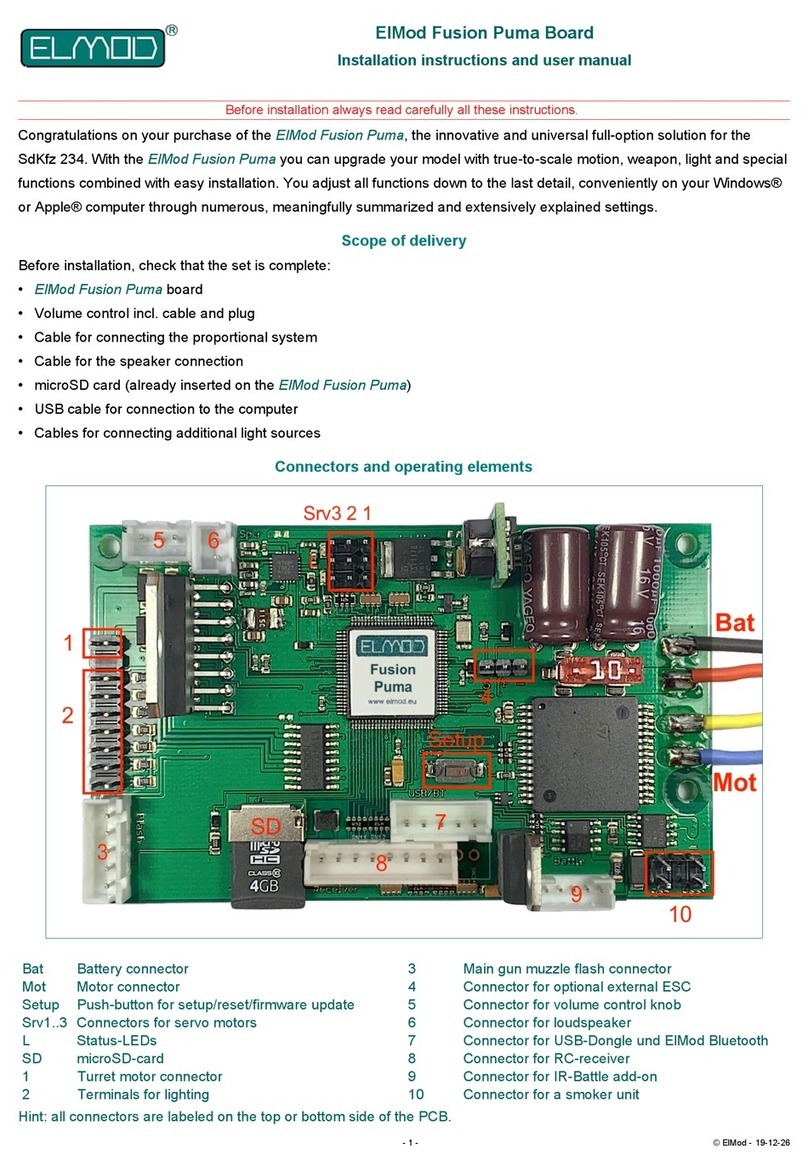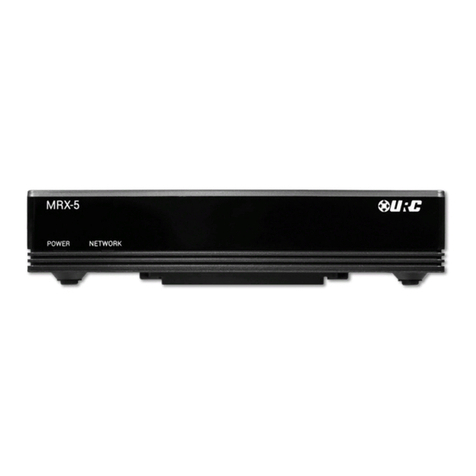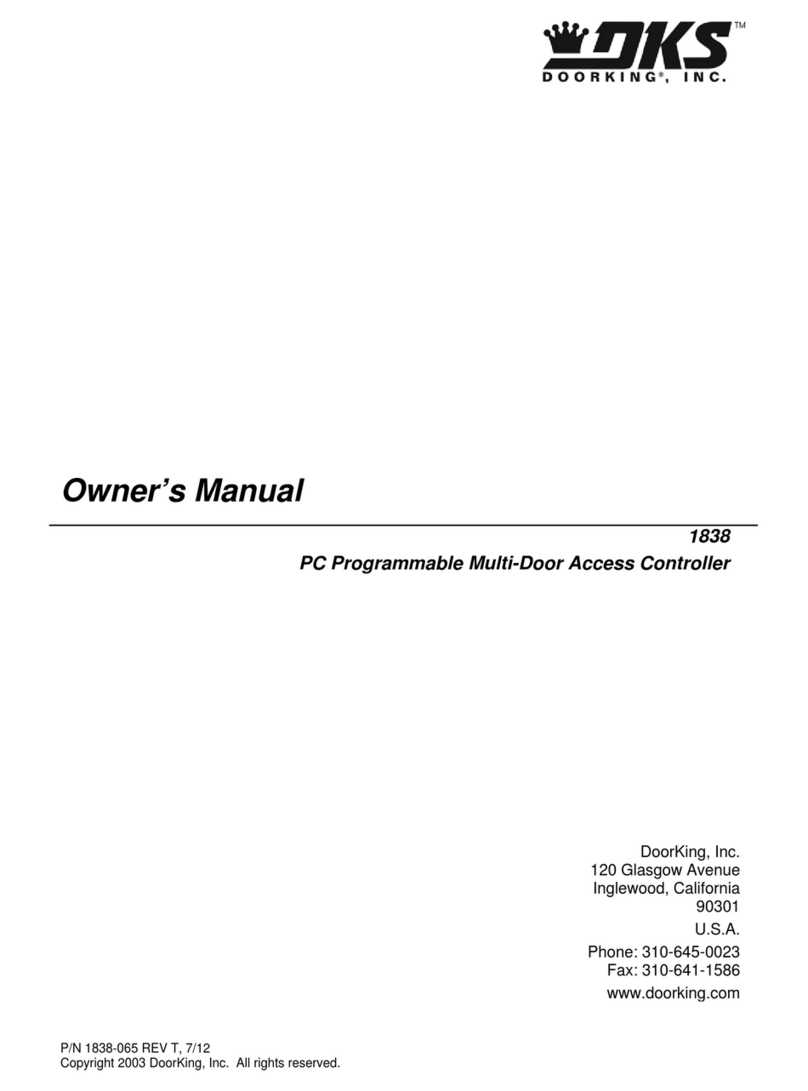
www.weg.net
Automatic Voltage Regulator – GRT7-TH4-R2 |
11
1 SAFETY INFORMATION
Toguarantee the safety of the operators, the correct installation and proper operation of the equipment, the following
precautions must be taken:
Installation and maintenance services should be performed only by qualified personnel, using appropriate equipment.
The product instruction manual and specific product documentation must always be consulted before proceeding with its
installation, handling and parameter setting.
Adequate precautions should be taken to avoid drops, knocks and/or risks to the operators and the equipment.
Do not touch inlet and outlet connections, and always keep them isolated from the rest of the panel command circuit, except
when otherwise instructed.
Always disconnect the main power supply and wait for the generator to come to a complete stop, before touching any electrical
component associated with the equipment including the control connectors. Do not touch the input and output connectors since
high voltages may be present even after the power has been switched off and keep them isolated from the rest of the principal
command circuit of the generator.
The equipment’s electronic boards can have components that are sensitive to electrostatic discharges. Do not directly touch
components or connections. If this is absolutely necessary, then first touch the grounded metal body or use an appropriately
grounded bracelet.
2 STORAGE AND TRANSPORT
If the generator needs to be stored for a short period of time before its installation and/or start-up, the following measures should
be taken:
The regulator must remain in its original package or in a similar package which provides the same safety conditions against
mechanical damages, excessive temperature and humidity so as to avoid rusting of contacts and metallic parts, damages to
integrated circuits or any other damage arising from improper storage;
Properly packaged, the regulator must be kept in a dry and well-ventilated area away from direct sunlight, rain, wind and other
adverse weather conditions in order to ensure the preservation of its operational functions.
Failure to comply with the above mentioned recommendations could exempt the supplier of the equipment from any
responsibilities and liabilities from any resulting damages as well as voiding the warranty on the equipment or damaged part.
3 INTRODUCTION
The GRT7-TH4 R2 automatic analog voltage regulators are compact products featuring high reliability and low price, which were
designed with state-of-the-art technology for voltage regulation of brushless synchronous generators.
Their control and regulation circuits use semiconductors and integrated circuits duly tested following the most demanding quality
requirements. It doesn’t utilize mechanical components for field flashing since its system is completely static. It is encapsulated
in resin suitable for maritime environment and withstands vibrations up to 5Gs. It is fitted with internal voltage adjustment by
trimpot and external by potentiometer.
The stability of the system is controlled through trimpots that adjust proportional and integral gains, allowing a wide adjustment
range and permitting the operation of the regulator with several types of generators, covering a large number of dynamic
characteristics.
It features under frequency protection (U/F limiter which does not permit that the generator to be excited during the turn off
procedures or with a rotation decrease), whose intervention point is adjustable by trimpot, and the rated operation frequency
can be configured for 50Hz or 60Hz operation.




















